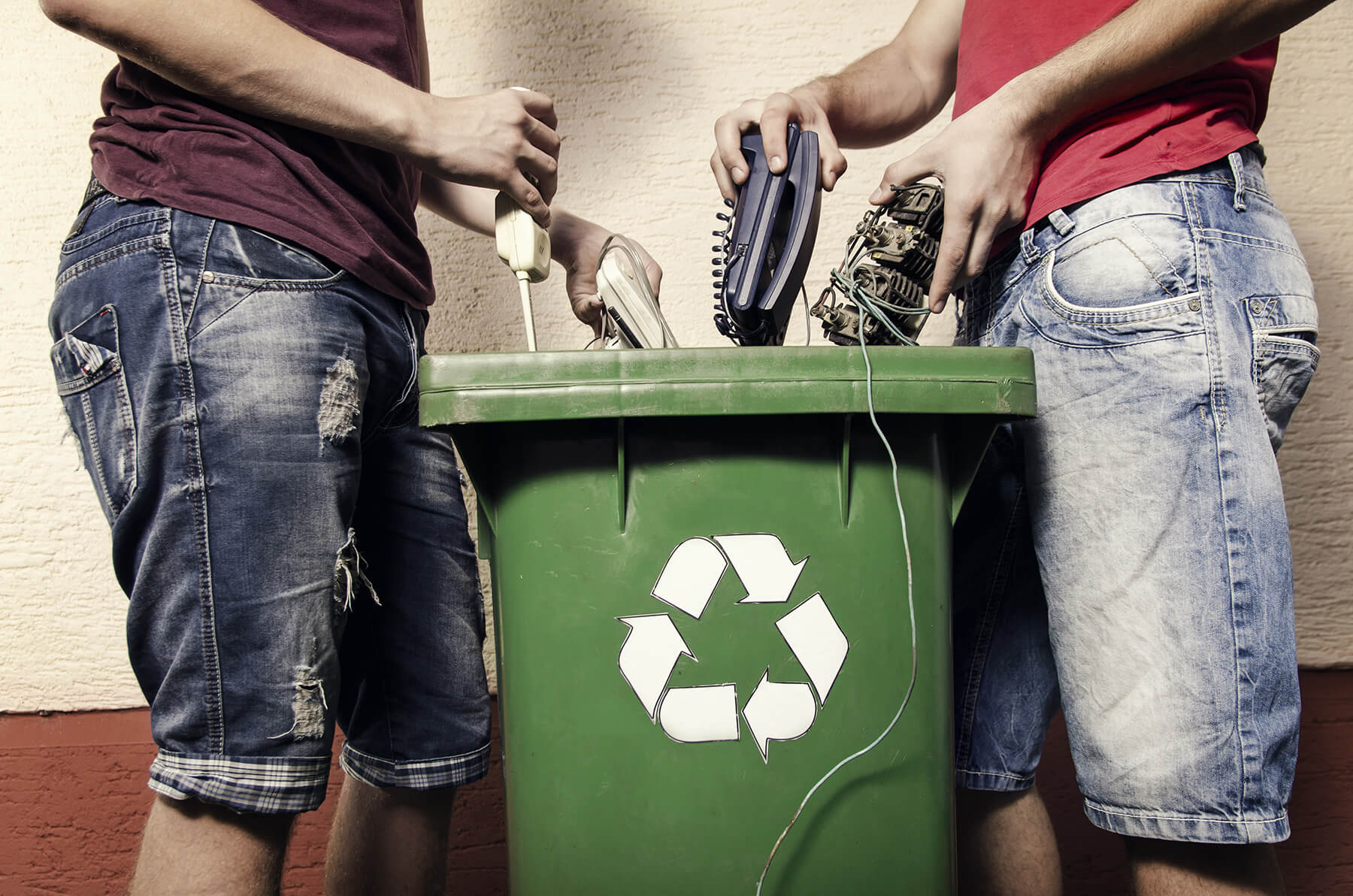The Electronic Waste Conundrum
Each day 142,000 computers and more than 416,000 mobile devices break, stop working or become obsolete and get trashed. Thanks to green IT projects, some of them get recycled. But an astonishing 60% still end up in landfills or incinerators, and that creates enormous problems. However, you can help address these issues by participating in green IT projects.
Green IT Projects Help the Environment
Recycling electronic waste is a good strategy for keeping unnecessary waste out of landfills. However, the cost to recyclers has skyrocketed, leading some to just shred the material, burn it or dispose of it overseas. All of these actions have serious consequences:
- E-waste in landfills breaks down, leaching toxins into the groundwater and harming soil health.
- Burning electronic waste emits dangerous dioxins and furans, which can settle on crops or feed grass and end up in the food chain.
- Improper recycling procedures can release heavy metals and other toxins into the air, water and soil, leading to pollution and contaminated food.
To overcome the negative environmental effects of electronic waste, several organizations now encourage upcycling devices instead of recycling. Upcycling gives your devices a new life – often enhancing the life of someone for whom such electronics were unaffordable – and keeps them out of landfills, smelters and shredders around the world.

Green IT Helps Keep People Healthier
About 33% of what we recycle or toss away ends up overseas where many “recyclers” do whatever they can to salvage what they can from the devices. They’ll burn electric cables to extract copper or drill into piles of printers, releasing toner ink, which then enters their respiratory systems. Many are unaware that the toxins in the waste – lead, mercury, chromium, arsenic and polyvinyl chloride – freed from such actions trigger human health issues including:
- Muscle weakness
- Poor wound healing
- Anemia
- Kidney disease
- Miscarriage
- Brain swelling
- Lung cancer
Upcycling keeps the toxins within the devices – and out of people’s bodies.
The Social Benefits of Going Green
We live in a digital age, but not everyone’s caught up. In fact, Burning Glass Technologies discovered – after an analysis of thousands of job postings – that employers say technical skills are what they need most. Yet 22% of US households earning less than $30,000 have no means to access the internet and only 52% own a smartphone, according to Pew Research. And many families may have only one old computer with lousy download speeds that everyone in the house needs to share.
So how are these people going to gain the technical skills they need to get ahead?
Upcycling means your electronic devices get a new life, making a dent in the digital divide. Imagine if your laptop or smartphone went to someone who would otherwise be unable to learn these important skills. By participating in green IT projects, you can not only protect the planet, but also help those less fortunate than you.
3 Green IT Projects You Can Join
One non-profit, Human-I-T in Commerce, California, takes green IT projects to a new level with its actionable philosophy of “refurbish, repurpose, and redistribute.” It takes your e-waste, turns it into operational and educational tools, and distributes it to those in need to create opportunities. It even conducts vocational training, encouraging digital literacy and training others in its refurbishing technology.
So, how can you participate – easily and for free – in this green IT project?
1. Donate Your Outdated Equipment
Donations of electronic devices to Human-I-T have kept 146,000 pounds of computers, mobile phones, and broadband internet devices out of landfills. Join the likes of Google, Microsoft and LinkedIn and donate your company’s outdated equipment for a good cause – and a tax deduction. Human-I-T connects with organizations around the country to pick up your equipment – and most of the time, that pickup is free. If they can’t pick it up, they’ll send you prepaid shipping labels for free freight shipping.
As an added bonus, you won’t need to spend time wiping the equipment. Human-I-T promises to sanitize it for you using policies and methods compliant with HIPAA, GLBA, FACTA, FISMA, SOX, and more.
2. Host a Technology Drive
Encourage employees and residents in your community to donate their old equipment by holding a technology drive. You collect the devices: Human-I-T picks them up. It’s that simple.
They accept:
- Cables/cords
- Cell phones
- Chargers
- Computers
- IP phones
- Home printers/scanners
- Keyboards
- Laptops
- Mice
- Monitors
- Smartphones
- Tablets
3. Volunteer with Human-I-T
Don’t have enough equipment yet to donate? No worries. You can volunteer with Human-I-T no matter where you live. You can find a list of volunteer opportunities at Volunteer Match or apply online at the Human-I-T site. And if you live in the Los Angeles area, consider an internship with Human-I-T in accounting, business development, human resources, IT, marketing or operations. The organization even encourages you to create your own internship.
If an internship is not for you, you can volunteer to help onsite, providing technical support, teaching digital literacy, planning distribution events, or refurbishing equipment. It is the refurbishment that is at the heart of Human-I-T’s efforts. After all, as Martin Oteng-Ababio of Ghana University says, “It is only thanks to the second-hand market that part of the population is allowed access to technology, know-how and technical proficiency which would otherwise be difficult to obtain.”
Green Your IT
Be part of the second-hand market. Eliminate electronic waste to clean up the environment and help keep people healthy. Up-cycle your electronics and give someone a chance to learn technical skills. Support green IT projects.

